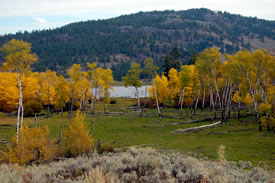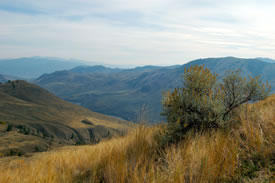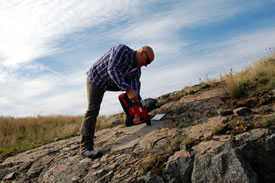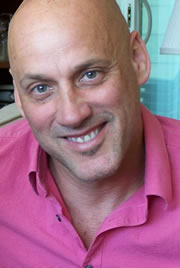My day in the field with Barb and Thomas

Sage and Sparrow Conservation Area, BC (Photo by NCC)
On that crisp, sunny autumn day, Barb Pryce and I were on a mission. The trembling aspen leaves had turned golden since I had last visited the Nature Conservancy of Canada's (NCC’s) 3,120-acre (1,262-hectare) Sage and Sparrow Conservation Area (acquired and conserved in 2012-2013).
We were returning to Sage and Sparrow to install a brass plaque memorializing the vision, the life and the significant natural legacy contribution of a man named Thomas Tano Forbes, who passed away in 2008. He had lived the last years of his life in the Okanagan near Vernon and who had directed in his estate planning that a considerable gift was to be made to NCC to be used to conserve natural spaces in British Columbia. NCC received notice of this gift from Mr. Forbes’ executor in Switzerland just as we were nearing the fundraising target to acquire two properties in the South Okanagan known as Sagebrush Slopes and Sparrow Grasslands.

Mike and Barb's lunch spot at Sage and Sparrow Conservation Area (Photo by NCC)
Well, NCC always has a plan to conserve more land and so I met with the executor and his wife during a visit they made from Switzerland to Victoria, BC. I was joined for this meeting by Marcella Zanella, NCC’s national director of planned giving. We shared with them this remarkable coincidence that we were in a position to double the size of the earlier projects Mr. Forbes’ estate had helped us acquire and connect these two properties into one conservation area. This was the perfect plan from everybody’s perspective and very appropriate given Mr. Forbes’ connection and passion for the Okanagan.
But back to our mission on that fall day...
Barb Pryce, BC’s Southern Interior program manager, and I drove about 45 minutes from the highway outside of Osoyoos then hiked up to a place that Barb and Dick Cannings (one of our BC Board Members) had chosen a few weeks earlier. We carried in the brass plaque that weighed 12 kilograms, along with a battery-operated hammer drill, a carbide drill bit for drilling into the granite rock face, some special epoxy and our lunches.

Michael Curnes drilling holes for the plaque mount, Sage and Sparrow Conservation Area (Photo by NCC)
Pictures can only begin to do justice to the landscape we were in, perched on the steep slope of a ridge with granite outcroppings, towering above the Similkameen River and a barb-wire fence in the distance that separates British Columbia from Washington State.
We ate our sandwiches while waiting for the special epoxy to harden and cure. I have to say this was the fanciest and most impressive outdoor restaurant I have been in for a long time.
Since creating the Sage and Sparrow Conservation Area, Barb and her science colleagues have identified more than 31 species at risk living on these lands. The biodiversity in this dry, rolling corner of the planet is astounding. A couple of these included species we didn’t even know existed in British Columbia before we had the opportunity to get onto these lands that had been under private ownership for a century.
The epoxy dried and our mission accomplished, we took a moment to acknowledge a life lived and a legacy created. We thanked Thomas Tano Forbes for his vision for a future he would not see, but one he believed he could influence. Taking a few steps back to admire our work and take in the vastness of this protected landscape, a bald eagle soared past us over our shoulders — really coming out of nowhere — and maneuvered two circles above us and the plaque that was glistening in the sunshine.
Then Thomas soared off. We took this sign, this good omen, as our permission to believe we have done right by Mr. Forbes.


